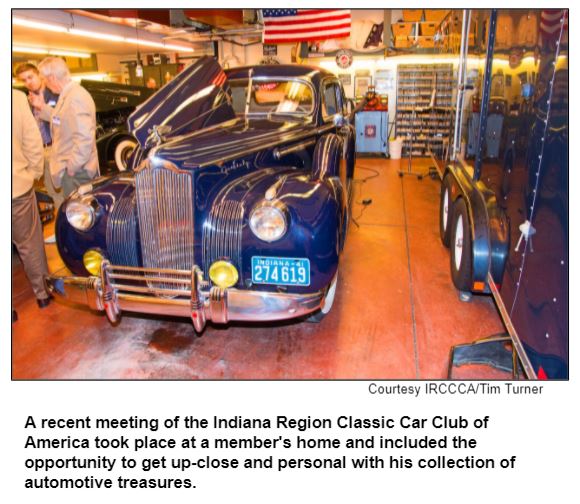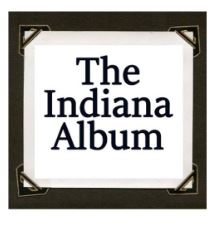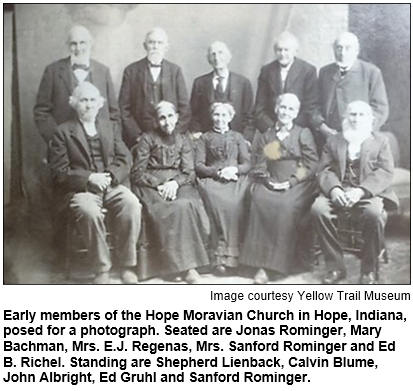Saturdays, noon to 1 p.m. ET on WICR 88.7 FM.
Or stream audio live from anywhere on WICR Online!
June 5, 2021
Car collecting in Indiana
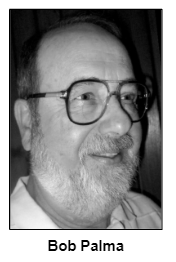
As Hoosier History Live explores the world of Hoosier car collectors like Bob, we won't focus exclusively on "classic" autos; that term has a specific, limited definition with some clubs for owners and enthusiasts, often referring to cars manufactured before the late 1940s.
Instead, with Bob as our guide, we will take a broad look at Hoosier owners and clubs (or local chapters of national groups) with a span from Model A Fords (the Model A was a successor in the late 1920s of the innovative Model T) through enthusiasts of Corvettes, Mustangs and other cars designed in the 1960s and '70s. Bob is a life member of both the Studebaker Drivers Club and the Antique Automobile Club of America.
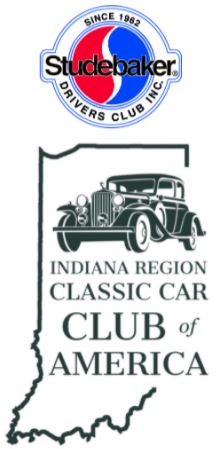
There are more of these enthusiasts in Indiana than you may assume. The Indiana Region Classic Car Club of America, which was founded in 1959, has more than 125 members who own Duesenberg sedans, Stutz roadsters and other cars made in Indiana during the 1930s or earlier; a 1932 Cadillac, and a 1937 Packard convertible, among other prized possessions.
That group meets monthly, as does the Mustang Club of Indianapolis. About 205 owners of Mustangs and related Ford Motor Company products participated two years ago in the club's Race to Indy, its major annual event.
At least half a dozen Corvette clubs - including Corvette Indy - can be found in Indiana. An online registry of car clubs on the Old Cars Only website lists dozens of other car collector groups, including Indiana chapters of a national club for Model A Ford enthusiasts.
Our guest Bob Palma is the technical editor of Turning Wheels, the monthly magazine of the Studebaker Drivers Club, which has about 10,000 members. Bob, who also is a columnist for Hemmings Classic Car magazine, was a guest in 2020 on a Hoosier History Live show that explored the Studebaker brothers and the company they founded, which became the largest employer in South Bend until the last car was made there in 1963.
Bob is retired from a career that included teaching auto mechanics at Arsenal Technical High School in Indianapolis and editing textbooks. He emphasizes that obtaining replacement parts for older model vehicles is easier than many people assume.
"You can even buy a complete, brand new reproduction of a 1957 Chevrolet or 1969 Camaro body if you want," he reports.
Many of the car clubs in Indiana organize events such as caravans (sometimes called "parades") of owners' vehicles for trips across the state - and beyond - to see notable collections and visit historic sites.
Despite the implications of the "Race to Indy" title, the annual event organized by the Mustang Club of Indianapolis is not a competition. It's a stationary car show that's been held for more than 40 years and includes a silent auction that benefits charitable organizations.
Roadtrip: God's Acre at Moravian Cemetery in Hope
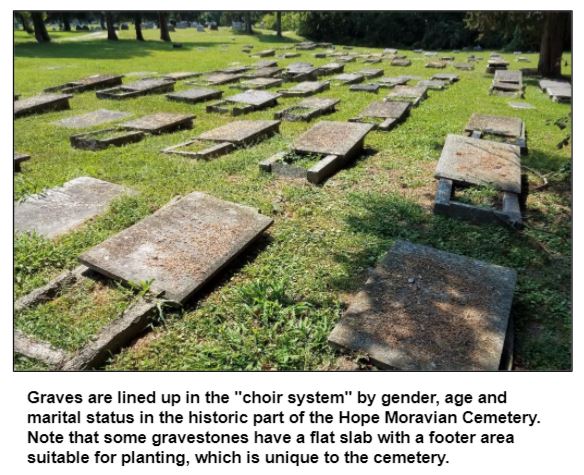
Guest Roadtripper Ken Marshall, educator and broadcast veteran, suggests we head southeast of Indianapolis to the charming little town of Hope in Bartholomew County.
The town was originally a "congregational town" for Moravians only, with land and property owned and managed by the church and leased to church members. The town was founded in 1830 by Protestant Moravian Martin Hauser from Salem (now Winston-Salem) North Carolina. The Moravian Church had its origins in 1457 in Moravia, an area now a part of the Czech Republic. Moravians pre-dated the Protestant Reformation with breaks in belief from the Roman Catholic Church, and were likewise subject to persecution.
The historic section of the Hope Moravian Church Cemetery is known as "God's Acre," with its first burial in 1833. Members were buried in the "choir" system, in which graves are situated by gender, with a section for boys, unmarried men, married men, girls, unmarried women, married women, and the indigent. This follows the early Moravian custom of burial that originated in Herrnhut, Germany.
The Hope Moravian Church and Cemetery is just southwest of Hope's town square, which boasts several locally owned shops, restaurants and the Yellow Trail Museum, which highlights Hope's unique Moravian heritage.
History Mystery

The surname of three brothers who grew up in France and Switzerland more than 120 years ago remains one of the most famous names associated with automobile manufacturing to this day - even though there has been no family involvement in any car company since the 1920s.
The three brothers, who immigrated to the United States during the 1900s, were brilliant mechanics and race drivers. The youngest brother even won the Indianapolis 500 during the 1920s; tragically, he was killed not long after during a race in California.
The eldest brother founded a car-making company. But he clashed with his business partners and quit the company that bore the family's surname - a name that, even with corporate acquisitions, continues to be associated with new cars.
Two of the three brothers are buried in Holy Cross and Saint Joesph Cemetery in Indianapolis.
Question: What was the family name of the three brothers?
The call-in number is (317) 788-3314. Please do not call in to the show until you hear Nelson pose the question on the air, and please do not try to win if you have won any other prize on WICR during the last two months. You must be willing to give your first name to our engineer, you must answer the question correctly on the air and you must be willing to give your mailing address to our engineer so we can mail the prize pack to you.
The prizes this week are a voucher for two tickets to a Monument Circle tour led by Indiana Landmarks, courtesy of Indiana Landmarks, and two tickets to Indy's Teeny Statue of Liberty Museum, courtesy of Tim and Julie's Another Fine Mess.
People are talking about Hoosier History Live!
"Hoosier History really is 'Live' - and 'Lively' as well. The program brings to new audiences the delight and wisdom that comes with knowing more of our past and our connections as Hoosiers."
-James H. Madison, Emeritus History Professor, Indiana University
"I only listen to the show on podcast because the timing is at MY convenience. It fills a niche, and satisfies my love for Hoosier history."
-Kathleen Madinger Angelone, retired bookstore owner
"I’ve loved listening to Hoosier History Live during the pandemic as an intelligent, well-researched program to escape the news for an hour."
-Lee Little, JD, MLS, Research Librarian, Indiana University
Nelson Price, host and historian
Molly Head, producer/general manager, (317) 927-9101
Mick Armbruster, associate producer
Cheryl Lamb, administrative manager
Richard Sullivan, senior tech consultant
Pam Fraizer, graphic designer
Garry Chilluffo, consultant
Please tell our sponsors that you appreciate their support!

 For organizational sponsorship, which includes logos, links, and voiced credits in the show and in podcasts, email molly@hoosierhistorylive.org, or call (317) 927-9101 for information. Our podcast listens are increasing and we are being distributed on Indiana Memory and the National Digital Public Library. Grow with us as our podcast and internet presence expands! Thanks also to Visit Indy, Fraizer Designs, WICR-FM, Henri Pensis, Genesis Brown, Kielynn Tally, Heather McIntyre, Justin Clark, and many other individuals and organizations.
For organizational sponsorship, which includes logos, links, and voiced credits in the show and in podcasts, email molly@hoosierhistorylive.org, or call (317) 927-9101 for information. Our podcast listens are increasing and we are being distributed on Indiana Memory and the National Digital Public Library. Grow with us as our podcast and internet presence expands! Thanks also to Visit Indy, Fraizer Designs, WICR-FM, Henri Pensis, Genesis Brown, Kielynn Tally, Heather McIntyre, Justin Clark, and many other individuals and organizations.
Thank you!
We'd like to thank the following recent, new and renewal contributors whose donations help make this show possible!
- David Yount
- Tom Swenson
- John Stanton
- Kathleen Angelone
- Tim and Meg Shelly
- Connor & Company, Inc.
- Georgia Cravey and Jim Lingenfelter
- Ann Frick
- Yetta Wolen
- In memory of William G. "Bill" Mihay
- Dr. William McNiece
- Michael Freeland and Sharon Butsch Freeland
- David E. and Lynne J. Steele
- Stacia Gorge
- Margaret Smith
- Rachel Perry
- Tom and Linda Castaldi
- Greg Larson
- Marion Wolen
- Ryan Zumbahlen
June 12, 2021 - Coming up
Moravian heritage of Hope, Indiana - Encore
|
Columbus, Ind., in Bartholomew County, south of Indianapolis, is known as a "Modernist Mecca" for its striking examples of midcentury architecture, which draw visitors from far and wide. The nearby small town of Hope in the county's northeast Haw Creek Township is much less well known, but has its own distinctive cultural heritage, which we explore in this encore of a show that originally aired in September of 2016. The show is guest-hosted by Hoosier History Live producer Molly Head.
Hope was founded in 1830 by Protestant Moravian Martin Hauser. Like many persecuted religious minorities seeking autonomy and religious freedom, Moravians moved into different parts of Europe and on to America, where they settled mostly in North Carolina and Pennsylvania. German was the language spoken by Moravians coming to America.
![]() As Hope was originally founded, the church owned and ran the town. Somewhat similar to social experiments in New Harmony with communal property, the "congregational town" concept ended in Hope in 1837 when the town was opened up to individual property ownership, and non-Moravians also were allowed to settle there.
As Hope was originally founded, the church owned and ran the town. Somewhat similar to social experiments in New Harmony with communal property, the "congregational town" concept ended in Hope in 1837 when the town was opened up to individual property ownership, and non-Moravians also were allowed to settle there.
Some early residents of Hope were descendants of the settlers of the ill-fated Moravian Mission that operated near Anderson, Ind., along the White River, from 1801 to 1806. The mission's purpose was to bring Christianity to the Native Americans in the area. The mission members and its Native American "converts" were met with strong resistance by local tribes, and in particular by The Prophet, the brother of Shawnee leader Tecumseh. Learn more about The Prophet's "Indian witch hunts" on the show.
 The Hope Moravian Church, founded in 1830 and originally housed in a log cabin on the town square, remains the only Moravian Church in Indiana. Many of its traditions continue today, such as display of the "putz," or elaborate Christmas scene in miniature, in the church at Christmastime, the tradition of hanging Moravian stars, and the making of Moravian sugar cakes, a type of sweet, raised coffee cake widely sold at local festivals.
The Hope Moravian Church, founded in 1830 and originally housed in a log cabin on the town square, remains the only Moravian Church in Indiana. Many of its traditions continue today, such as display of the "putz," or elaborate Christmas scene in miniature, in the church at Christmastime, the tradition of hanging Moravian stars, and the making of Moravian sugar cakes, a type of sweet, raised coffee cake widely sold at local festivals.
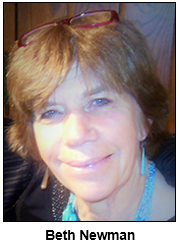 Since the 1830s, Hope Moravians have also gathered in God's Acre, the historic section of the Hope Moravian Church Cemetery, for the Easter Sunrise Service, which includes a trombone choir and a processional by all church members that involves singing songs and watching the sunrise.
Since the 1830s, Hope Moravians have also gathered in God's Acre, the historic section of the Hope Moravian Church Cemetery, for the Easter Sunrise Service, which includes a trombone choir and a processional by all church members that involves singing songs and watching the sunrise.
Molly's guests include two retired Hope elementary school teachers who also are great storytellers: Barb Johnson and Beth Newman. Both Barb and Beth have taught 4th-grade Indiana history and also have played the role of schoolmarms at the Simmons School, which is a brick one-room schoolhouse that was moved from its original location in the country to the back yard of the Hope Elementary School in 1989. Guests Barb and Beth are also involved in the Yellow Trail Museum, the history museum located on the town square. Much of downtown Hope and surrounding residential areas is listed on the National Register of Historic Places.
Editor's note: Since the original airing of this show in 2016, Barb Johnson has passed away.
Copyright 2021
|

